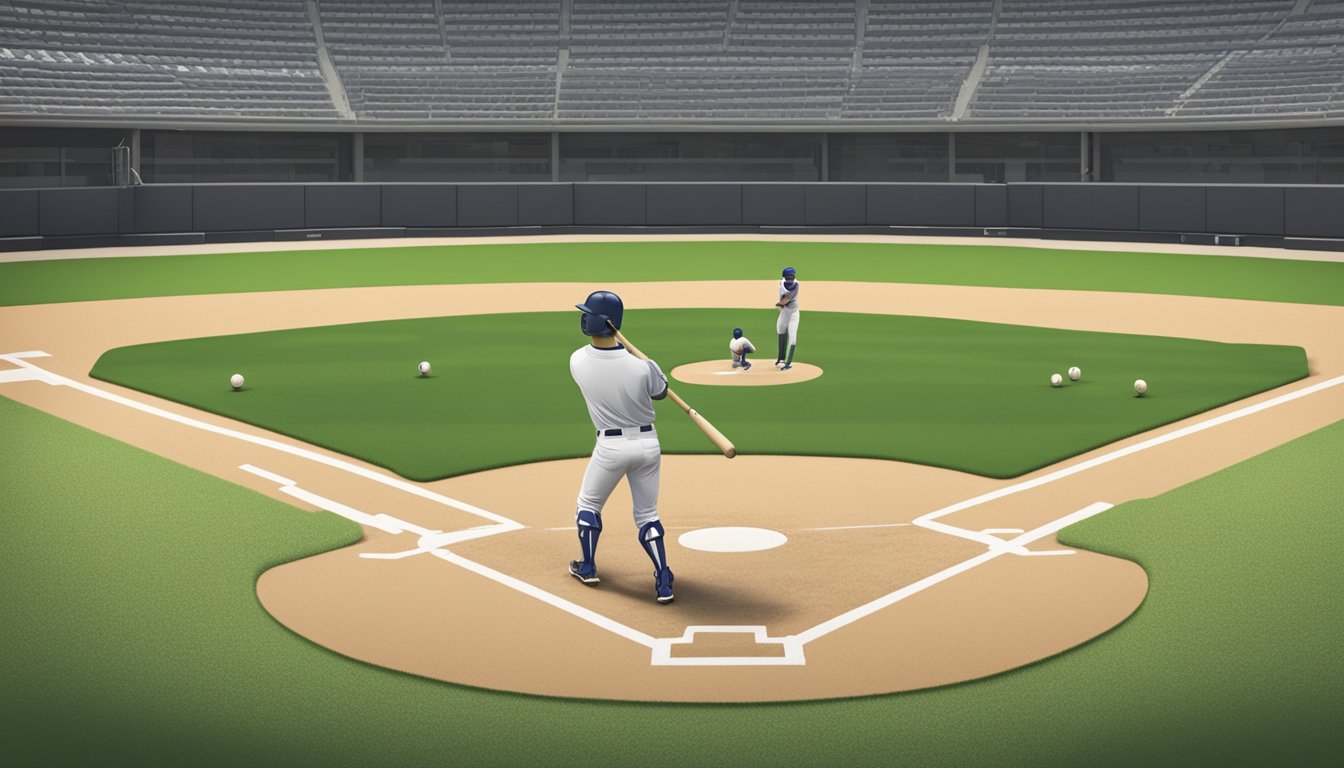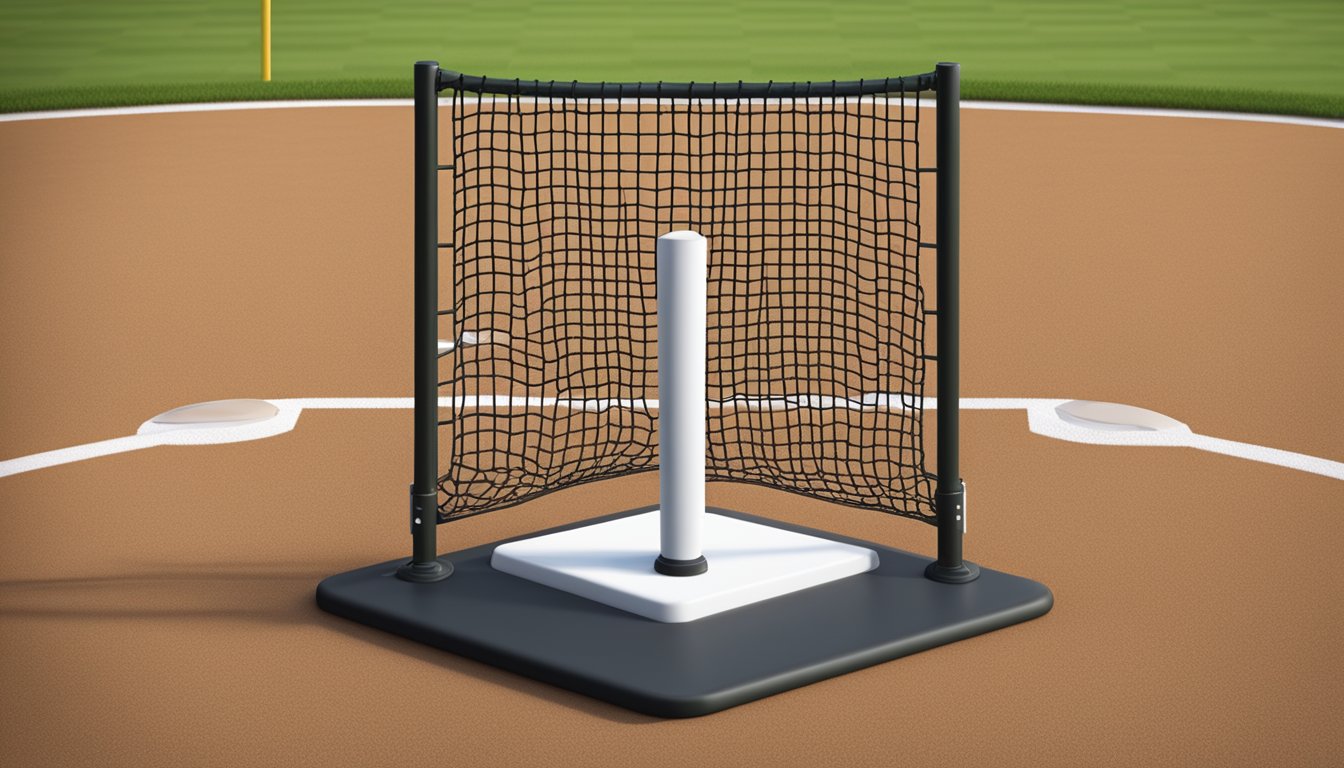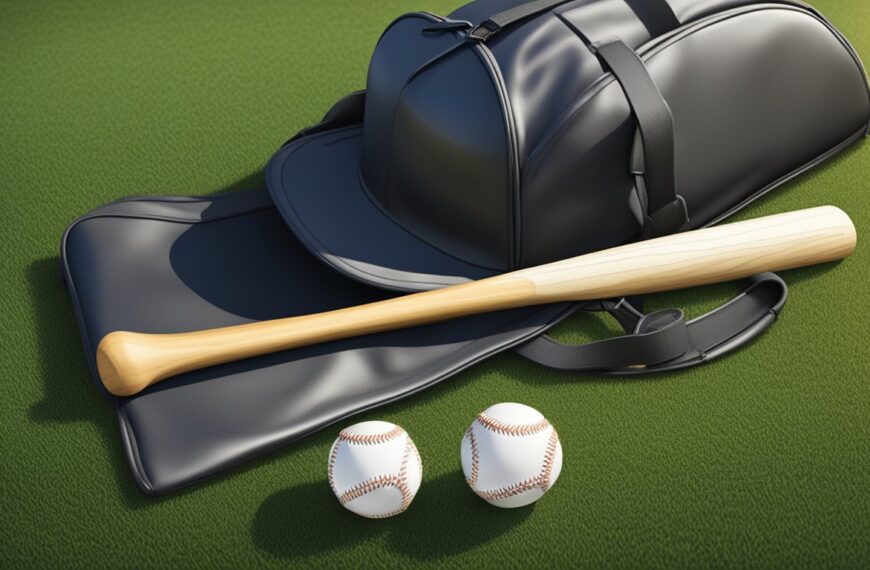Batting tees are a fundamental tool for baseball players aiming to improve their swing. The simplicity of a batting tee allows for focus on specific aspects of hitting, from swing mechanics to muscle memory. Advanced players use the tee to refine their swings and address weaknesses that show up during live pitching. By breaking down the swing into components, batters can isolate and improve areas such as point of contact, swing path, and stance stability.
Incorporating advanced drills using batting tees can significantly enhance a player’s ability to hit with power and consistency. These drills are designed to mimic game situations and condition the body and mind to react effectively during at-bats. With emphasis on repetition and incremental adjustments, players can transform their batting performance. This approach helps in building confidence at the plate, which is essential in the face of challenging pitches.
Key Takeaways
- Batting tees help isolate and improve specific swing components.
- Advanced tee drills enhance power and consistency in hitting.
- Regular practice conditions the body and mind for game situations.
Understanding the Basics
Mastering the use of batting tees can significantly enhance a baseball player’s technique and swing mechanics. An understanding of equipment, form, and motion is crucial for maximizing the benefits of practice.
The Role of Batting Tees in Baseball Training
A batting tee is an essential training tool in baseball, allowing hitters to practice without the variability of pitches. It gives them the opportunity to focus on specific areas of their swing. The primary goal is to develop muscle memory by repeating proper swing mechanics, ensuring consistency and strength when hitting the ball.
Components of an Effective Swing
An effective swing is characterized by several key components:
- Bat Path: The bat must follow a smooth and direct path to the ball to maintain power and accuracy.
- Stance: A balanced and comfortable stance is the foundation, with feet shoulder-width apart.
- Swing Mechanics: Includes the sequence of movements such as the weight transfer from back to front leg, the rotation of the hips, and the extension of the arms.
A player must integrate these elements seamlessly to generate the maximum bat speed while hitting the ball squarely within the strike zone.
Proper Stance and Grip Techniques
A correct batting stance and grip technique are vital for a successful swing:
-
Stance:
- Feet should be aligned with the shoulders, slightly bent at the knees and waist.
- Weight should be on the balls of the feet, allowing for quick movements.
-
Grip:
- Hands should be held together near the end of the bat.
- Knuckles of both hands should line up to allow for a firm yet flexible grip.
These techniques allow a hitter to maintain balance and control throughout the swing, ensuring that the bat meets the ball in an optimal hitting zone.
Advanced Batting Tee Drills
https://www.youtube.com/watch?v=WF76TXmisFM&embed=true
Enhancing batting skills requires a focused approach to tee work. The following drills target specific aspects of a hitter’s swing, incorporating drills like the Tanner Tee to improve power, balance, and the ability to adjust to pitch locations.
The Step Back Drill
The Step Back Drill emphasizes dynamic balance and generating momentum towards the ball. Start with the front foot slightly behind the back foot. As the batter prepares to swing, they step forward to gain momentum while maintaining balance. This motion improves the swing path and helps in hitting the ball with more force.
Hitting for Power
For hitters aiming to increase their power, focusing on mechanics is key. Place the Tanner Tee at the center of the strike zone. The hitter should concentrate on driving the hips and using their core to generate a powerful swing. Practice hitting the ball to the opposite field with a level swing path to develop the ability to drive the ball with authority.
Adjusting for Pitch Location
Adjusting the placement and height of the batting tee helps hitters to practice hitting pitches in various zones. For an outside pitch, place the tee slightly further away and line it up with the back of the plate to practice taking the ball to the opposite field. For an inside pitch, position the tee closer to the front foot, allowing the hitter to work on pulling the ball with power. Practicing these adjustments will enhance the batter’s ability to hit with precision and power across all pitch locations.
Building Muscle Memory and Coordination
https://www.youtube.com/watch?v=4G1tDCWazoc&embed=true
To excel at hitting, a batter must develop consistent muscle memory and hand-eye coordination. This involves structured practice and repetitive drills that embed the feel of the perfect swing into the hitter’s repertoire.
Consistent Practice Routines
Consistent practice routines establish a foundation for muscle memory. A hitter should:
- Schedule regular sessions: Aim for frequent, short practices, rather than infrequent, long sessions.
- Repeat drills: Cycle through a set of drills that cover different aspects of hitting, from stance to follow-through.
Creating Effective Muscle Patterns
Developing effective muscle patterns means training the body to perform the swing accurately and powerfully. Players should concentrate on:
- Visualization: Before swinging, they should visualize the correct movement pattern.
- Feedback: Use videos to review and adjust swing mechanics.
Improving Hand-Eye Coordination
To polish hand-eye coordination, batters can include:
- Toss drills: Another player or coach tosses balls at different speeds and angles, while the hitter focuses on timing and contact.
- Tracking exercises: Watch the ball from the pitcher’s hand or the machine through to the point of contact.
Swing Mechanics and Technique
https://www.youtube.com/watch?v=xInPUnOR7tY&embed=true
Optimizing swing mechanics is crucial for hitters looking to gain precision and power. Focused tee work allows for the repetition required to engrain effective technique.
Developing Proper Swing Kinetics
Proper swing mechanics begin with the kinetic chain, where each segment of the body builds upon the previous to generate force. A hitter should initiate the swing with the hips, transferring energy through the core to the shoulders, and finally the arms, allowing the barrel of the bat to follow through the hitting zone with maximum efficiency. Key points include:
- Hips and Core Activation: The hips should rotate explosively, providing the initial force.
- Shoulder Alignment: Shoulders stay in line, rotating after the hips to transfer energy.
- Arm and Wrist Action: Arms stay relaxed with wrists snapping at the point of contact.
By integrating these elements, a hitter can create a fluid and powerful swing.
Tee Placement and Swing Path Adjustment
Tee placement is foundational in developing a precise swing path. For a right-handed hitter using a standard batting tee, such as a Tanner Heavy, the tee should be positioned slightly in front of the plate and aligned with the hips. Adjustments to tee placement can address specific areas:
- Inside Pitches: Tee closer to the hitter’s body.
- Outside Pitches: Tee further from the hitter’s body.
- Elevated Pitches: Tee height adjusted upward.
- Lower Pitches: Tee height adjusted downward.
Adjusting tee placement permits the hitter to practice different points of contact, promoting adaptability in swing path.
Maximizing Bat Speed
Increased bat speed translates to greater power at the point of contact. To maximize bat speed, time spent on tee work should incorporate drills that strengthen the fast-twitch muscles responsible for quick movements. Practices include:
- Weighted bat swings: To develop strength in the specific muscles used in swinging.
- Hand-path drills: Focuses on keeping the hands inside the ball, allowing for quicker swings.
- High-velocity practice: Mimicking game-speed swings to condition the muscles for faster reaction time.
Consistent, deliberate practice with emphasis on developing these attributes can lead to noticeable improvements in bat speed.
Mental and Physical Conditioning
https://www.youtube.com/watch?v=7iRSUlOORaQ&embed=true
Effective batting requires both mental sharpness and physical readiness. This section will touch upon how a batter can enhance mental focus, strengthen the body specifically for batting, and employ effective warm-up and recovery routines.
Boosting Mental Focus
To boost mental focus, a hitter should engage in consistent mental preparation. This includes setting clear goals for each practice, such as visualizing a full swing before actually taking a cut. Doug Bernier, a former infielder with the Minnesota Twins, emphasized visualization techniques to mentally rehearse swings. This practice helps in replicating success during actual games.
Strengthening the Hitter’s Body
A hitter’s body, particularly the muscles in the legs and core, are essential for power and stability during a swing. Strength training exercises, tailored to enhance these areas, can result in noticeable improvements in one’s batting. A regimen that includes squats, lunges, and rotational exercises will develop the necessary muscle groups for a potent full swing.
Warm-Up and Recovery Strategies
Before approaching the batting tee, it is crucial to have a structured warm-up routine to prepare the muscles for the activity ahead, which could range from dynamic stretching to light cardio. Post-practice, a dedicated recovery process involving stretching and perhaps foam rolling can aid in muscle repair. A coach can provide personalized routines that cater to an individual player’s needs.
Game Situation Application
https://www.youtube.com/watch?v=fBNIsIOkSlI&embed=true
To truly master hitting, a batter must transition skills from practice to game situations. This section addresses specific techniques for simulating game conditions during batting tee practice, focusing on improving swing mechanics against varied pitches, devising batting approaches for hitting to different parts of the field, and calibrating a batter’s response to the pressure of an in-game scenario.
Practicing with Varied Pitches
Batters should create drills that mimic different pitch types. By adjusting the tee’s height and position, they can simulate high and low, inside and outside pitches. For an inside pitch, the tee should be positioned closer to the hitter and slightly in front to ensure proper contact points and timing. Conversely, placing the tee further away and slightly behind replicates an outside pitch, challenging the batter to extend their arms and focus on hitting to the opposite field with accuracy.
Strategies for Different Field Locations
A batter’s approach must be tailored to various field locations. Here’s a structured way to practice:
- Pull Side: Aim for low tee settings and pull the ball with power.
- Center Field: Set the tee in the middle, encouraging a compact swing that drives the ball straight ahead.
- Opposite Field: Place the tee away from the batter to enhance their capability to make contact with outside pitches effectively.
Adjusting to In-Game Pressure
To build a hitter’s game sense, drills should incorporate elements that replicate in-game stress. One effective method is to count balls and strikes during tee practice. This enforces a disciplined, focused mindset, improving a batter’s ability to react under pressure. Adding a component of timed drills can also simulate the need for quick decision-making, reinforcing not only swing mechanics but also mental toughness and timing.
Equipment and Accessories
To effectively utilize batting tees, players should consider the quality of equipment and accessories that will both enhance skill development and protect their investment.
Choosing the Right Batting Tee
Selecting a batting tee that is durable and adjustable can greatly influence a player’s training experience. For baseball and softball, products like Tanner Tees are popular due to their reliable construction and ability to withstand repeated use. When choosing a batting tee, one should consider the tee’s weight and stability, ensuring it won’t tip over easily. It’s also essential to look for a height-adjustable model to cater to various training drills and player sizes, ranging from tee ball to coach pitch to live pitching scenarios.
Additional Training Aids
Incorporating training aids can accelerate a player’s development. Utilizing items like:
- Batting Helmets: These are crucial for safety during live pitching simulations. Helmets should be certified for impact resistance and fit snugly.
- Weighted Bats: These can help improve swing strength and speed.
- A Strike Zone Outline: This helps batters learn to identify and target different pitch locations.
Combining these aids with regular use of a tee can result in a well-rounded training routine.
Maintenance and Care
Proper maintenance of batting tees and accessories ensures longevity and performance. Clean the tee’s rubber cup and base regularly with mild soap and water to prevent the buildup of dirt and debris. Store the tees in a cool, dry place to prevent rubber deterioration. Inspect the equipment routinely for any signs of wear and tear, and replace parts as necessary to maintain a durable training setup.
Tailoring Drills for Player Development
https://www.youtube.com/watch?v=pzvT71bYw8A&embed=true
Tailored batting tee drills are essential in developing hitters. Each drill must be adjusted to the player’s age, skill level, and specific sport to enhance technique and increase solid contact with the ball.
Adapting Drills for Youth Players
Young athletes, particularly little leaguers, require drills that build fundamental skills while keeping the practice engaging. Structured repetition is vital. For instance, a drill that focuses on hitting a low tee will teach them how to properly adjust and make solid contact with different pitch locations.
- Contact Point Drill: Youth players practice hitting the ball off the tee from various contact points to simulate hitting different types of pitches.
- Inside Pitch: Tee inside and in front of the plate.
- Outside Pitch: Tee outside and slightly behind the plate.
This ensures young players develop a clear understanding of where they need to contact the ball for hits to all fields.
Advanced Techniques for Professionals
Professionals need more sophisticated drills that challenge their mastery and refine their technique. They should focus on drills that simulate in-game scenarios and adjust their tee work to reflect the average speed and location of pitches they expect to face.
- Variable Speed Drill: Professionals alternate between fast and slow swings to mimic changeups and fastballs.
- Zone Targeting Drill: They practice hitting the ball into specific zones to improve precision.
Softball-Specific Considerations
Softball players face unique challenges due to the underhand pitch trajectory. Drills tailored for softball must address these differences.
- Upward Swing Drill: Emphasizes the upward swing path necessary for consistent contact in softball.
- Begin with the tee at a low height and gradually increase to encourage an upward swing plane.
All drills for softball players should be calibrated to improve the athlete’s ability to make solid contact with the specific pitches they’ll face, such as the rise ball.
Frequently Asked Questions
This section addresses common inquiries, providing insights on enhancing swings, improving throwing accuracy, and utilizing training aids effectively in baseball and softball.
What specific drills can enhance power in a baseball batting swing?
To boost power in a batting swing, players should focus on lower body strength and explosive rotational exercises. Drills like the tee-to-fence drill, where the player must hit the ball with enough force to reach the fence on a fly, can build power. Emphasizing hip rotation and using weighted bats also contribute to increased swing power.
What techniques can improve accuracy in baseball throwing?
Players can improve their throwing accuracy by practicing the four-seam grip throw and working on their footwork to align their body properly toward their target. Target practice with a focus on consistent release points, along with resistance band exercises to strengthen the shoulder, can also sharpen accuracy.
How can a swing stick be used effectively during batting practice?
A swing stick, or a narrow training bat, is used to enhance hand-eye coordination and refine a batter’s swing path. By consistently hitting small targets or mini baseballs, players condition themselves to make precise contact with the ball, translating to improved performance with a standard bat.
What are the best fielding and throwing drills to develop baseball skills?
To hone fielding skills, infielders should practice the short hop drill repeatedly, which improves their reaction time and glove work. For throwing, the long-toss drill enables players to build arm strength and accuracy over distances, crucial for effective on-field throws.
What are effective drills for improving softball hitting using a stick?
Softball players can use a stick to practice the short ball drill, where they hit small whiffle balls to mimic the precise contact needed for a softball. This drill can improve timing and increase bat control, leading to more consistent hitting in games.
How can one achieve a perfect batting swing through practice and technique?
A perfect batting swing is a result of consistent practice focusing on proper mechanics, timing, and balance. Drills that isolate specific phases of the swing, such as the load, stride, and follow-through, help refine technique. Regularly reviewing and adjusting form through video analysis is also critical for ongoing improvement.











